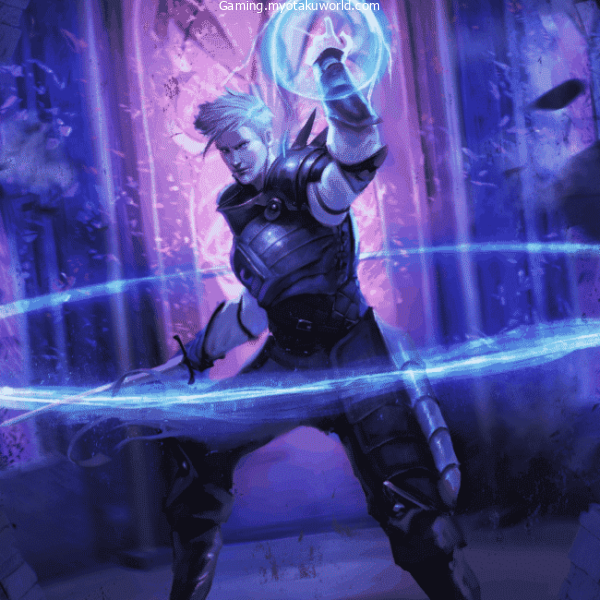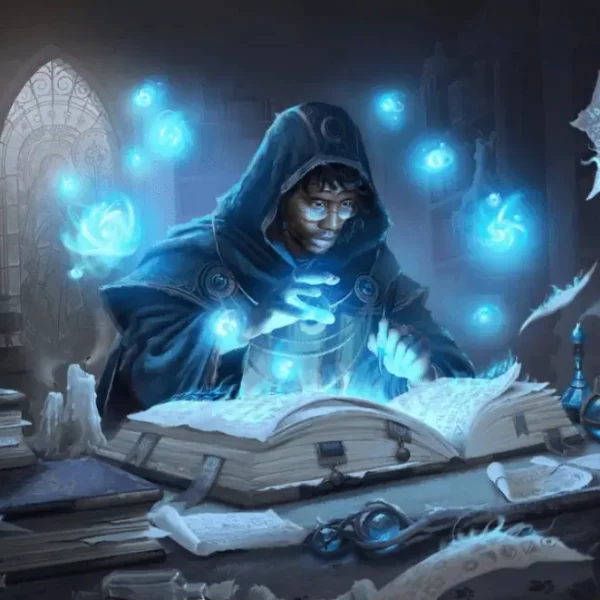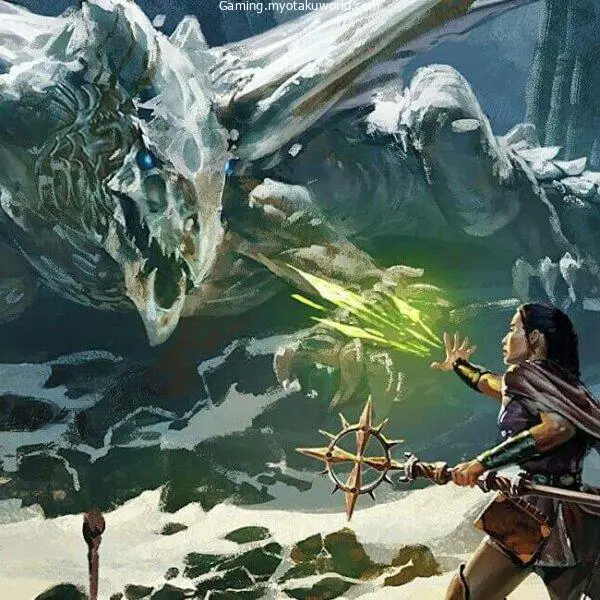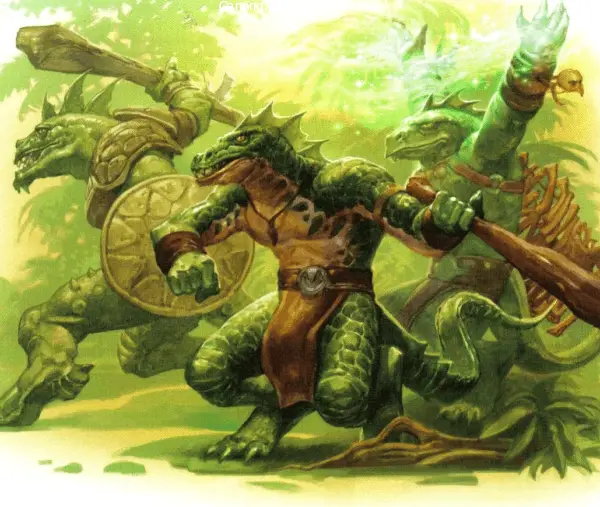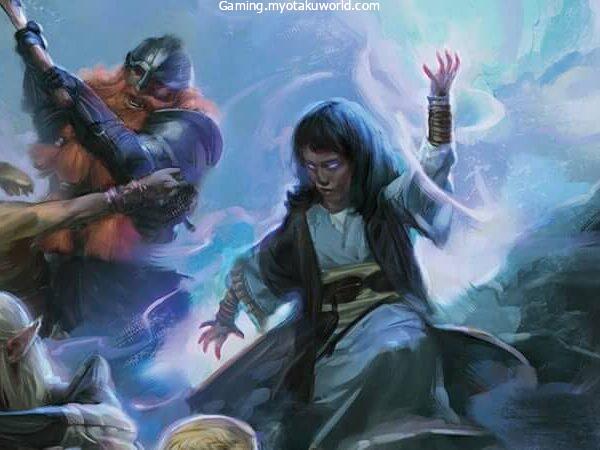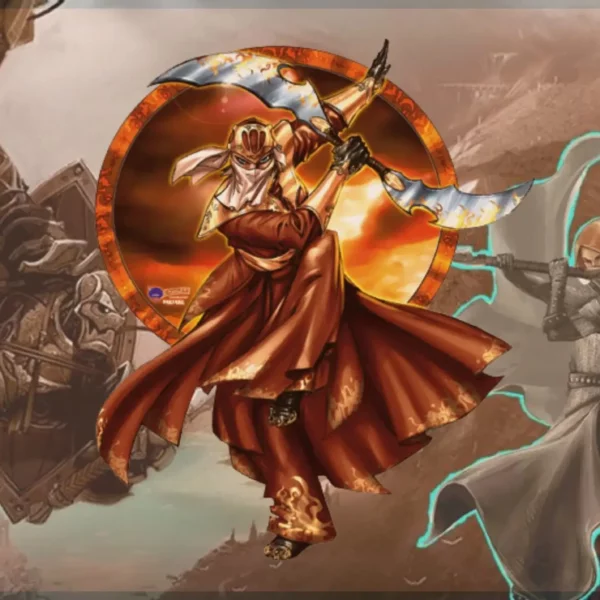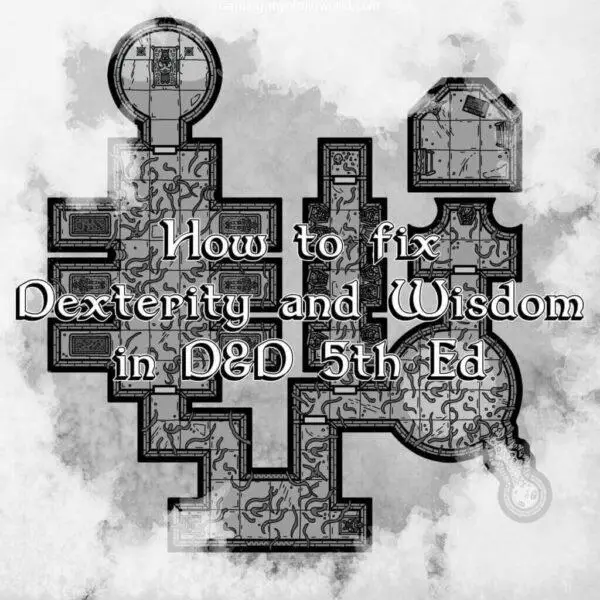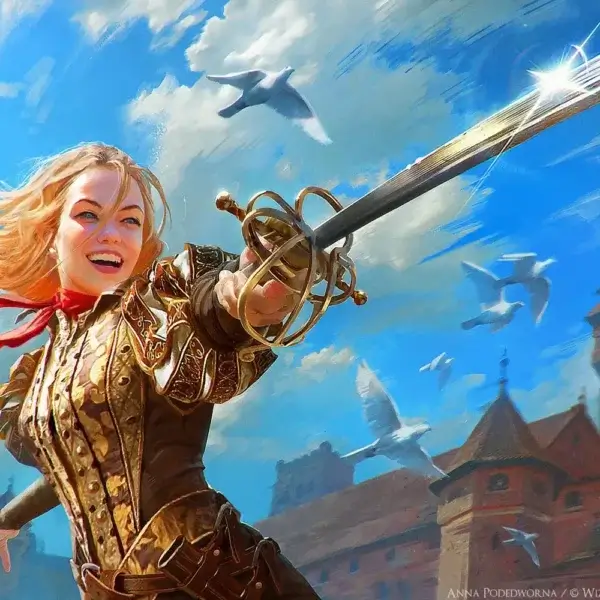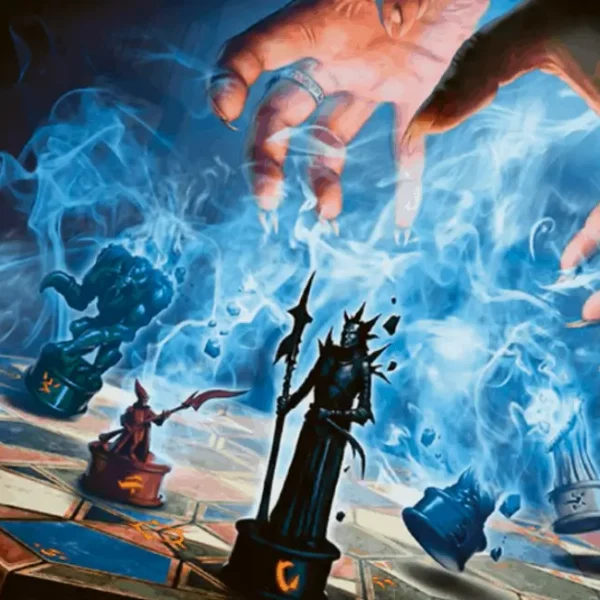The Dungeons & Dragons weapons allow characters to prove themselves as powerful warriors, defeat enemies and protect their allies.
Your weapon could be your delivery system or the way you fight back the undead to protect civilization.
No matter what, the weapon you choose will be a major part of your character. It will also influence your play style. This is the complete DnD Weapons guide:
- Weapons in D&D
- Martial Weapons and Simple
- D&D Weapons Guide: All Weapon Properties Explained
- D&D Weapons Broken Down
- Simple Melee Weapons
- Simple Ranged Arms
- Martial Melee Arms
- 2d6 vs. 1d12
- Martial Ranged Weapons
- DMG Weapons
- Explosives
- Renaissance Weapons
- Modern Weapons
- Futuristic Weapons
- What Weapon is the Best?
- FAQs
Weapons in D&D
D&D has many weapons classified in different ways to make it easier for players to identify who can use them.
You must be proficient in using any weapon to effectively use it. You have learned and trained to use the weapon.
Your character’s class is a major factor in your proficiency but other factors like your race or feats you have performed, and the training you do on your adventures are also important.
You don’t get your proficiency bonus if you aren’t proficient with a weapon. Any plebeian can pick up a sword, swing it around, and have fun with it.
They may even cause some damage. They won’t be as effective in battle as a trained warrior.
Martial Weapons and Simple
First, weapons are classified as simple or advanced. Simple weapons are basic and require little training to be useful. The simplest weapons are clubs, daggers, and light crossbows.
These weapons are not as destructive as traditional martial weapons. Basic weapons proficiency is the foundation of artificers, bards, clerics, and fighters, as well as monks and paladins, rangers, and rogues.
Martial weapons require special training and more skill to use effectively. These include longswords and longbows, rapiers are also available.
Greataxes is another example. Martial weapons are more effective in combat and deal more damage, with the highest damage dice being d12s.
It is understandable that only trained martial arts classes like barbarians, fighters, and paladins have proficiency in martial weapons.
These classes are proficient with all types of martial weapons. However, bards and other classes can only learn to use a handful of martial weapons.
D&D Weapons Guide: All Weapon Properties Explained
Weapons have properties that are specific to how they can be used. These are some of the properties that weapons could possess:
- Munition: These weapons need some type of ammunition to function. A bow is not enough. You need arrows. You can walk around after a combat encounter and retrieve half of the ammunition you have spent, provided you can reach where you fired.
- Finesse: To wield these weapons, you can either use strength or dexterity.
- Heavy: These weapons are too powerful for small creatures. They can also be used to disadvantageous effect when they’re wielded. This is something most DMs will overlook and allow you to play the halfling barbarian if necessary.
- Light: These weapons are light and can be used in two-weapon fighting.
- Loading: Even if your fighter has four attacks, this is still the maximum number of shots you can make.
- Range: Bows and throwable weapons are examples of weapons with a range. These weapons have a range of between a short-range and a longer range. This is written as: (normal range/long distance). The normal range refers to how far away a target must be to attack it normally. You attack with a disadvantage if a target falls between the long and normal ranges. You cannot target a target that is outside your long range.
- Reach: This property increases the range of your melee weapons by 5 feet. Long polearms can hit enemies up to 10 feet away, instead of 5 feet.
- Thrown.
- Two-Handed: These weapons require two hands. Heavy melee weapons need the strength of both arms, while bows and arrows require both hands to hold and fire.
- Versatile: These weapons can be used with one hand, but they deal more damage when used with two hands in a melee attack.
D&D Weapons Broken Down
Let’s take a look at each weapon in the game and see how powerful they are.
To help you compare the differences between each category of weapon, they are listed in an order that varies from the smallest to the most damaging.
Simple Melee Weapons
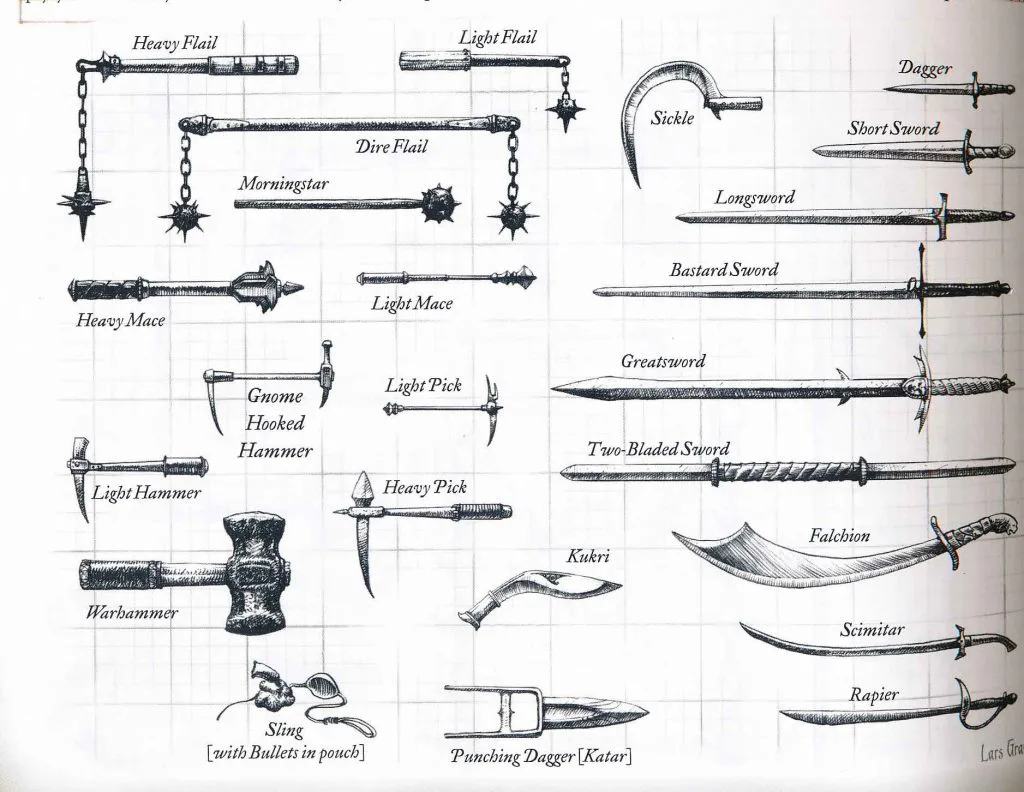
Club
It is a blunt object you can use to knock someone’s head. It weighs 2 pounds and costs 1 silver piece.
The club deals 1d4 damage by bludgeoning and can be used to fight with two weapons.
Dagger
You can conceal it in your person. It weighs 1 pound and costs 2 gold pieces. The dagger deals 1d4 in piercing damage.
It has finesse, light, and thrown properties, with a range of 20–60. Because of their clandestine nature, a rogue may choose to use daggers instead of rapiers.
Sickle
The sickle, a tool for farming, has been used in many games as a weapon. It has a short, straight blade and a wooden handle.
It is 1 gold, weighs 2 pounds, and deals 1d4 slashing injury. You have many other options.
Handaxe
A small, throwable axe. These axes cost 5 gold coins each, so don’t throw them in places where you won’t be there to retrieve them.
The handaxe is 2 pounds in weight and can be thrown in the 20/60 range. It deals with a 1d6 slashing injury.
Javelin
A javelin spear is designed to be thrown farther than usual. They cost only 5 silver pieces making them more affordable than handaxes.
They weigh 2 pounds and have the thrown property with an extended range of 30/12. They lack light property so they cannot be thrown offhand at the same time.
Light Hammer
A light-hammer measures the same size as a household claw hammer. Their properties are very similar to daggers.
They deal piercing damage rather than bludgeoning, and they lack the finesse property which limits their Strength build.
Mace
This is not pepper spray. A mace, which is a large-sized metal club that can cave into your enemy’s skulls, is usually a heavy-metal end club.
They are 4 pounds each, cost 5 gold coins, and do 1d6 bludgeoning harm. Pop culture associates maces with clerics, but you don’t have to use one as a priest.
Quarterstaff
A quarterstaff is a long, long wooden stick measuring 6 feet in length and about 1 inch in thickness.
It is 4 pounds in weight, costs 2 silver pieces, and causes 1d6 bludgeoning. It can also be used with one hand and does 1d8 damage.
Monks will love this weapon and can follow it up with some punches.
Spear
The spear, a classic weapon, fits mechanically between a javelin or quarterstaff. It is 3 pounds in weight, costs 1 gold, and deals 1d6 damage.
The thrown property is less effective than the 20/60 javelin. It has a versatility property that deals 1d8 damage when used with both hands.
You cannot use the versatile property to throw a spear with both hands to inflict 1d8 damage.
Great club
A blunt object slightly larger in size. The great club is 10 pounds in weight and costs 2 silver pieces. It requires two hands.
It is the most deadly melee weapon, dealing 1d8 bludgeoning and death damage.
It is also unusually lacking the heavy property, despite being heavier than other heavy weapons.
Simple Ranged Arms
Dart
This is the only example of finesse being used to take a Dexterity weapon and let you use Strength.
A dart can be used to throw a small, sharp spike at your enemies. They cost 5 copper pieces each and are 1/4 pound each.
They also deal with 1d4 piercing and can be thrown at enemies. This ranged weapon is cheaper for monks that can’t go into melee.
You can also reskin them to make them look like throwing stars to keep the theme.
Sling
David defeated Goliath by using one. Now you can also indulge your desire to throw pebbles at your foes.
It costs 1 silver, has ammunition, and does 1d4 bludgeoning. It is slightly more powerful than darts, with a 30/120 range, and weighs almost nothing.
Shortbow
This is a lighter bow-and-arrow option that costs 25 gold pieces and weighs 2 pounds. It deals 1d6 damage.
Short bows are equipped with ammunition and two-handed properties, with a range between 80/320.
Light Crossbow
A light crossbow, even though it is smaller and has a shorter range than its heavier counterpart, can still fire a crossbow bolt with a range of 80/320.
It costs 25 gold pieces and weighs 5 pounds.
Martial Melee Arms
Whip
Whips belong in the category of martial arts. Untrained people can easily cut their own eyes. A whip does not deal 1dd4 slashing injury.
It is 3 pounds in weight, costs 2 gold coins, and has reach and finesse properties. This is not a lasso that you use to restrain someone. It’s a whip that you crack to make them bleed.
Scimitar
A scimitar, a short sword with an angled blade, is also known as a sabre. It looks a lot better and is a lot more expensive. The scimitar is 25 gold pieces and weighs 3 pounds.
It deals with a 1d6 slashing injury. It is a great choice for dexterity-based builds as well as two-weapon fighting because of its finesse and light characteristics.
Shortsword
A shortsword, a 20-inch-long blade, is great for Two-Weapon Fighting.
The shortsword works almost exactly the same way as the scimitar. It costs 10 gold pieces and weighs 2 pounds.
Trident
This is a spear with a sea-theme theme. The trident in this instance is mechanically identical to a spear (see below).
It is slightly more expensive and weighs 1 pound less. It is a shame that it doesn’t have any other features.
Battleaxe
A battleaxe is a classic option. It costs 10 gold pieces and weighs 4 pounds. It deals with 1d8 slashing injuries.
The versatile property of the axe is that it can be used with both hands to deal 1d10 damage.
Flail
A flail, a wooden shaft that has a spiked ball attached at its end, is made of wood. It is similar to the battleaxe and costs 10 gold pieces.
However, it deals 1d8 damage (bludgeoning), but it weighs half as much at 2 pounds. It lacks versatility. This weapon is best if you only intend to attack one-handed.
Longsword
The longsword’s knife measures approximately 40 inches, twice the length of a shortsword. It is 15 gold, 3 pounds in weight, and deals 1d8 slashing injury.
It has the same versatility as the battleaxe. When used with both hands, it deals 1d10 damage. This is largely a matter of preference.
Morningstar
A morningstar bludgeoning weapon has a large spiked metal ball at the end. A flail is attached to the shaft with a chain, but a morningstar attaches directly to the shaft. It is priced at 15 gold pieces and weighs 4 pounds.
This is the heavier and more expensive choice than the flail, but it comes down to personal preference.
Rapier
The Rapier is a short, sharp sword that can pierce enemies rather than cut through them. A rapier is the most popular finesse weapon because it has the highest damage.
A rapier is 25 gold pieces and weighs 2 pounds. It deals with 1d8 piercing damage and has the finesse property.
Warpick
Imagine someone digging a point with a sharp pick into a mountainside to climb it. Imagine the mountainside as a head.
This is a warpick. This weapon is designed to compete with the flail or morningstar and costs 5 gold pieces. It weighs 2 pounds and deals 1d8 piercing damages.
Warhammer
This upgrade The light hammer has a longer shaft and a heavy, iron head at its end. This weapon is compatible with the longsword and battleaxe.
It is priced at 15 gold and weighs 2 pounds. It can be used to attack with one hand and 1d10 with the other.
Double-Bladed Scrimitar (ERLW).
This exotic weapon is featured in Eberron – Rising From the Last War. The scimitar features a wooden handle at its center and a scimitar blade at either end.
This ancient and rare weapon was created by Valenar elves. It weighs 6 pounds and deals 2d4 slashing injury.
It is equipped with a two-handed prop. Additionally, it has a special ability that allows you to use a bonus attack to attack the opposite end. This attack deals with a 1d4 slashing injury.
The weapon was designed for Eberron settings. Check with your DM to see if you are allowed to use it.
Glaive
A glaive, the first polearm option, is a long spear that has a single-edged blade at its end. The glaive is a 6-pound spear that costs 20 gold and deals 1d10 damage.
It also has heavy, reachable, and two-handed properties.
Halberd
A glaive is a body and head of a spear, while a Halberd is the spear’s body with the head.
It shares the same properties as the glaive.
Pike
This is the third option for a polearm. The pike is a spear-shaped spear with a body that resembles a spear. Its head is a whole spear.
The cost of this option is only 5 gold pieces and it weighs considerably more. However, it has the same mechanical advantages as the other two.
It weighs 18 pounds and is the largest melee weapon, as well as equal to the heavy crossbow.
You can choose one of the two other polearms since the price doesn’t really matter when you use it equipment.
Lance
These weapons can be used while you are on the amount, but it’s not necessary. It is 10 gold, weighs 6 pounds, and deals 1d12 in piercing damage.
It also has special properties and the reach property. It can only be used by two people if you are not on the amount.
You will also have an advantage against attacks within 5 feet of your target.
Maul
This is not a double-ended lightsaber. It is the father of all bludgeoning weapons. A maul is a heavy, two-handed hammer that deals 2d6 bludgeoning damage.
This is the great hammer alternative if you were wondering if there was one. A maul is 10 grams in weight and costs 10 gold coins.
Greatsword
A greatsword, the godfather of all swords has a blade that can reach 70 inches in length and be as long as a hand.
The best greatsword, which costs 50 gold pieces and weighs 6 pounds, deals 2d6 slashing injuries. It is heavy and can be used with both one-handed and two-handed weapons.
Greataxe
The great axe, the godfather of all the axes, is found in the battle with the greatsword.
The greataxe is 30 gold pieces and weighs slightly less than the greatsword at seven pounds. It deals with 1d12 slashing injury.
It is heavy and can be used with both one- and two-handed.
2d6 vs. 1d12
You might notice that the most powerful weapons deal either 1d12 or 6 damage. Each weapon can do a maximum of 12 damage plus modifiers.
Which is the best? The most important difference is the probability of rolling two dice rather than one.
You have the same chance of rolling any number on a die if you roll a 12 instead. Rolling 2d6 reduces the likelihood of extremely high or low rolls and ensures that you have a minimum of 2.
A d12 does 6.5 damage per round, while a 2d6 does 7. Both averages will increase if you use the Great Weapon Fighting fighting style.
The average d12 score rises to 7.33 and the average 2d6 score increases to 8.33. This is still a great fighting style.
Critical hits are different if you’re playing a barbarian or a half-orc. You can roll twice the damage dice for a critical hit.
On a critical hit, you get an additional die from the half-orc’s savage attacks or the barbarian’s brutal critical.
These abilities allow a d12 weapon to roll an additional d12, while a 2d6 weapon only deals an additional 1d6 damage upon a critical hit.
The abilities only give you one extra damage die. A great axe would deal an average of 19.5 damage, while a great sword would deal an average of 17.5 damage.
A 17th-level half-orc barbarian would do 8d6 damage on a critical hit. With a greatsword, they would deal 6d12 damage (an average of 39).
Consider the following when deciding between 2d6 or 1d12.
- Do you mind your damage die varying in results more or would you prefer more consistent but middling rolls?
- Do you prefer to play a barbarian or half-orc? Do you mind doing slightly less damage per round but dealing more on critical hits?
Martial Ranged Weapons
Net
The net can be described as a bizarre weapon. It weighs 3 pounds and costs 1 gold. This is a ranged weapon, but it only has a range of 5/15.
It has its own unique properties. When hit by a net, an opponent is held back if they are Larger or smaller.
You or another person are freed from restraints if you succeed on a DC 10 Strength Check or deal 5 slashing injuries to the net.
You can only make one attack with a net when attacking an enemy. This means that you cannot restrain an opponent with your first attack, then follow it with another attack, unless you use Action Surge.
You’ll need something to replace the damage caused by your initial net attack.
Blowgun
A blowgun is a tube made of wood and used to shoot small needles at your enemies. It is 1 pound in weight, costs 10 gold pieces, and deals 1 piercing injury.
You need to insert a needle into the dart before it fires. It also has ammunition and loading capabilities.
The range is 25/100.
Although it doesn’t look like this weapon can be used effectively, a Kensei Monk could make use of it by using their martial arts death instead and taking advantage of its concealability.
Hand Crossbow
A hand-crossbow can be used as a crossbow. It functions in the same way as a medieval firearm. It is the most expensive weapon in Player’s Handbook, at 75 gold pieces.
It is 3 pounds in weight and deals 1d6 piercing damage. It has both ammunition and light loading properties. You can fire it with one hand, but need two to reload. It can fire at 30/120 yards.
Longbow
The longbow, which is older than the short bow, has the longest range and is also the most powerful weapon in the game.
It is available for 50 gold coins, weighs 2 pounds, and deals 1d8 piercing damage. It can be used with ammunition, has heavy and two-handed properties, and has a range of 150-600.
You can also fire arrows far away from the battle mat if you are out in the open.
Heavy Crossbow
The heavy crossbow is the largest handheld crossbow available in the game. It costs 50 gold pieces and weighs 18 pounds. It deals 1d10 piercing damages. It can be loaded with ammunition and heavy loading.
DMG Weapons
The PHB includes classic weapons, but the Dungeon Master’s Guide also offers options for adventures in other settings and time periods.
These include futuristic weapons and firearms. Martial ranged weapons can be found in all of the futuristic, modern, and renaissance weapons. These weapons have additional properties.
- Ammunition: After a fire, ammunition is lost and cannot be recovered.
- Burst Fire: These weapons can be used to attack one target or ten pieces of ammunition in order to cover a 10-foot area. Each creature within the area must make a DC 15 Dexterity saving throw or suffer the weapon’s damage.
- Reload: These guns have a certain amount of ammo. To reload the weapon after it is empty, the user must take an action or bonus action.
Explosives
Bomb
A bomb may be thrown up to 60 feet. It deals 3d6 fire damage to everyone within 5 feet if they fail to make a DC 12 Dexterity saving throw.
Gunpowder
To deal with 3d6 and 7d6 fire damage, a powder horn or a gunpowder keg can be lit to cause fire damage to anyone within 10 feet.
Dynamite
Dynamite works similarly to a bomb, but does bludgeoning and can be attached to multiple sticks to deal up to 10d6 of damage. A fuse can be set up to six rounds long for dynamite sticks.
Grenades
A fragmentation bomb acts as a bomb but does 5d6 piercing to any creature within 20 feet.
A smoke grenade may be thrown to create a smoke sphere with a radius of 20 feet. This is similar to the word “cloud.” A grenade launcher is capable of firing a grenade at 120 feet.
Renaissance Weapons
Pistol
A pistol is 250 gold pieces in weight, 3 pounds, and deals 1d10 piercing damage.
It can load ammunition or other loading items with a range between 30/90 and 40/90.
Musket
A musket is 500 gold pieces in weight, 10 pounds in weight, and does 1d12 damage.
The ammunition, loading, two-handed, and range properties of a musket are all included.
Modern Weapons
Future and modern weapons have no gold price. This is because the game assumes that a setting where these items are readily available will most likely use a different currency system.
Auto Pistol
An automatic pistol is 3 lbs and deals 2d6 inflicting damage. It can hold 15 shots and has ammunition and reloading properties.
Revolver
The revolver is 3 pounds in weight and deals 2d8 piercing damages. It can hold 6 shots and has ammunition and reloads capabilities.
Hunting Rifle
The hunting rifle is 8 pounds in weight and can deal 2d10 piercing injuries. It comes with ammunition, two-handed, and reloading properties. The range is 80/240 and it can hold 5 shots.
Automatic Rifle
An automatic rifle is 8 pounds in weight and deals with 2d8 severe piercing injuries. It is equipped with ammunition, burst fire and two-handed reload capabilities, a range of 80-240, and a maximum of 30 shots.
Shotgun
The shotgun is 7 pounds in weight and can deal 2d8 piercing injuries. It can reload ammunition and has two-handed properties. The range is 30/90, with a maximum of 2 shots.
Futuristic Weapons
Laser Pistol
The laser pistol is 2 pounds in weight and deals 3d6 radiation damage. It is equipped with ammunition and reloads capabilities, with a range between 40/120 and 50 shots.
Antimatter Rifle
An antimatter weapon is 10 pounds in weight and causes a 6d8 necrotic injury. It comes with ammunition, two-handed, and reloading properties. The range is 120/360, and it can hold 2 shots.
Laser Rifle
The laser rifle is 7 pounds in weight and deals 3d8 radiation damage. It comes with the ammunition, two-handed and reloads properties, a range between 100/300, and a maximum of 30 shots.
Can I have one?
We have covered all the weapons in the game. There are many more weapons out there than the ones in the game. It’s often simple to take the stats of an existing weapon and modify it as you wish.
Most DMs will accept any item as long as it is compatible with the world. Many DMs will work with you to create your own statistics and make the weapon you desire.
Improvised Weapons
You might grab anything you can to defeat your enemy in the heat of battle. These situations are when you might use an improvised weapon.
Improvised weapons are 1d4 and have a throw range of 20/60. Your DM may allow you to use the weapon’s statistics if the object you are trying to wield looks like a real weapon.
Silvered Weapons
Some enemies, like lycanthropes, are immune to weapons that haven’t been coated with silver. With 100 gold, you can coat a weapon or 10 pieces of ammunition with silver.
The silver plating can be applied to any weapon or ammunition for an indefinite period of time.
Adamantine Weapons
An adamantine weapon is required if you wish to play Sokka in D&D with a meteor blade. These weapons are made from an extremely hard metal that is found in rare mineral veins.
Certain creatures, such as clockworks, are immune to weapons made from adamantine. These weapons deal critical hits to objects automatically and cost 500 more gold than their regular counterparts.
What Weapon is the Best?
This question depends entirely on the play style and class you are using. These are the most popular and effective weapon options.
- Single, Strength-based Weapon: Longsword
- single weapon based on dexterity: Rapier
- Two-Weapon Fighting based on Strength: Handaxes
- Two-Weapon Fighting based on Dexterity: Scimitars
- One-handed Polearm MasterQuarterstaff, or Spear
- Two-handed polearm master: Glaive Order Halberd
- Two-Handed Armor: Greatsword, unless you’re a barbarian/half-orc.
- Heavy Crossbow without additional attacks
- Ranged with additional attacks: Longbow, Hand Crossbow w/ Crossbow Expert
Magic Weapons
Many items are imbued in magic, along with the D&D world’s mundane weapons. You can kill Vecna with the most basic magic weapons.
- Magic Weapons and Ammunition can be in any form, including ammunition or weapons. These bonuses can be given in the form of a weapon or ammunition.
Uncommon Magic Weapons
- Javelin of Lightning: A javelin that can transform into a lightning bolt one day.
- Sword of Vengeance: is a cursed sword that forces you to attack any creature that has dealt you damage until you are killed.
- Trident of Fish Command: This Trident allows you to cast Dominating Beast upon underwater creatures.
- Weapon Of Warning: Grants You an Advantage on Initiative Rolls, and Your Party will Not Be Surprised.
Rare Magic Weapons
- Berserker Axe: A cursed axe that grants you more hit points and forces your attacker to attack the nearest person.
- Dagger Of Venom: A dagger that can magically be covered in poison to deal additional damage.
- Dragon Slayer: A sword that does additional damage to any dragon you attack with.
- Flame Tongue: A fiery blade that lights up and causes additional fire damage.
- Giant Shaker: This weapon deals more damage and can even knock over giants.
- Mace Of Disruption: A mace that does additional damage to fiends, and undead, and can even destroy them if their HP is less than 25.
- The Mace of Smiting: a mace that inflicts additional damage to a critical hit or against constructs.
- Sun Blade: This is a lightsaber.
- Sword of Life Stealing: Takes the hit points of your enemies and adds them to yours.
- Sword to Wound: Damage caused by this sword cannot be healed with magic, but you can make them bleed.
- Vicious Weapon: This deals an additional seven damage when taken as a critical hit.
Very Rare Weapons
- Arrow of Slaying: These arrows are made to kill a specific type of creature.
- Dancing Sword: A sword that moves by itself and kills people using other weapons.
- Dwarven Thrower: A Warhammer that flies to your hand once you throw it.
- Frost: A sword that deals with cold damage, and provides fire resistance.
- Nine Lives Stealer: A sword that instantly kills a creature that has less than 100 hit points. However, it can only be used nine times.
- Oathbow: A bow that allows you to declare your nemesis, and then shoot an arrow around the world at it.
- Scimitar Of Speed: A blade that is so fast you can attack again with it as a bonus action.
- The Sword of Sharpness: A sword that is so sharp you can lop off your limbs.
Legendary Weapons
- Defender: a sword that allows you to choose between increasing your chances of hitting and reducing your enemies’ chances of hitting you.
- Hammer of Thunderbolts: It is a returning weapon that stuns creatures with the power of Thunder. If you have the complete set, you can even kill a giant.
- Holy Avenger: A paladin’s sword that deals additional damage and grants you and your magic resistance
- Luck Blade: This blade allows you one daily reroll. You can also cast the most powerful spells in the game using it.
- Sword for Answering: a sword that matches your alignment, and allows you to attack those who are trying to attack you.
- Vorpal Sword: His sword does not lop off limbs but lops off the head.
FAQs
What’s the best weapon for D&D?
This depends on what your fighting style is, but the Greatsword does the most damage.
What weapons are available in D&D?
Any weapon is possible. You should consult your DM for stats. There are two types of weapons: simple and martial. They can also be divided into melee or ranged weapons.
What are +1 Weapons?
A weapon with a +1 stat block has the same stats as a regular weapon, but it grants you a +1 bonus on your damage and attack rolls. Additionally, most +1 weapons can be used magically to resist damage.
Is Excalibur available in D&D?
The Excalibur sword is not included in the official rules of D&D. However you can find many homebrew versions online.
Does D&D 5e include guns?
Guns can be found on page 268 in the DMG. If firearms are found in your adventuring realm, check with your DM.
Your weapon is an important part of your character in D&D. You can also adapt any weapon to fit the game.

